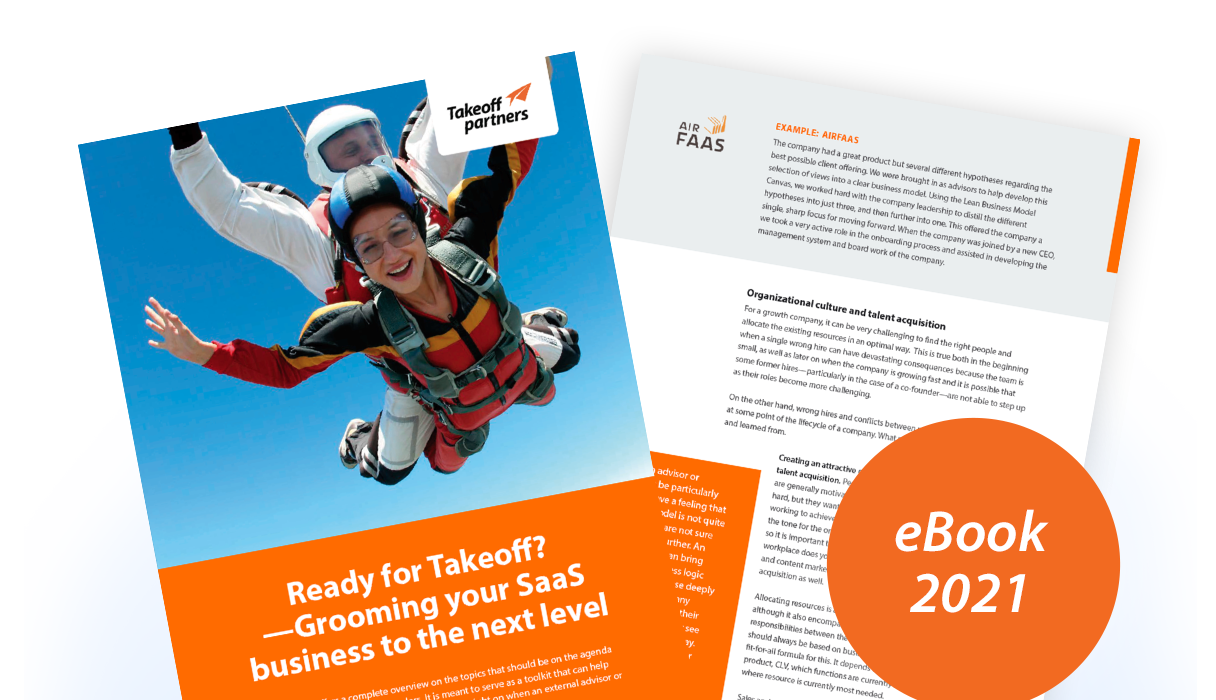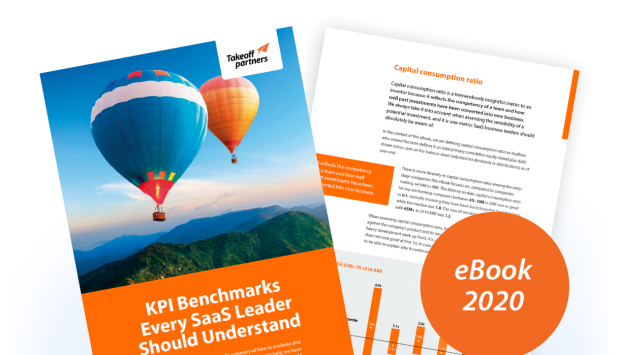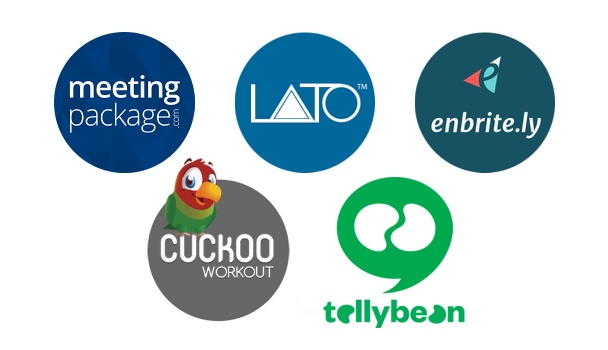#SaaS

B2B SaaS (‘Software as a Service’) business is booming. The subscription services that consumers first adopted as part of running so many aspects of their everyday lives have made their way to the B2B domain. The process is still on-going where new business services are being transformed from traditional project business to continuous subscription service business.
Regardless of their particular field of business, the challenges encountered by growth-ambitious SaaS companies tend to be very similar across all SaaS companies.
Originally as growth entrepreneurs ourselves, we have accumulated a wealth of knowledge about the priorities that SaaS companies need to address at different stages of their growth path.
Our SaaS consulting focus is on business leadership and commercialization, and we are intentionally leaving out the many aspects of SaaS technology development, which is not our area of expertise.
Generally speaking, we make the assumption that there is a skilled CTO in place in a SaaS company, the right technological competencies exist in-house, and the SaaS product is more or less fit for its market and finalized for customer use.
Leadership-related, Commercial, and Financial things to consider when growing a SaaS business
Business leadership
Before expanding your business, you should have a clear understanding of a number of things related to both strategic and hands-on things related to business leadership, including:
- Management systems
- P&L reporting to support data-driven leadership
- Developing SaaS KPI metrics
- Business model
- Organizational culture and talent acquisition
- Legal aspects and due diligence preparedness
Under the above topics, the key things to consider include:
- As traditional accounting reporting is not sufficient for a SaaS business, you will need to further develop it into customized management reporting
- SaaS businesses are best led in a data-driven way, so you will need to identify the KPIs that are relevant to your company specifically and start monitoring them
- You should revisit and validate your business model periodically. Canvas thinking can be very helpful in crystallizing your offering into one, clear hypothesis.
- Generally speaking, resource allocation should be done based on insight from data. Timing is everything when it comes to talent acquisition
Commercial operations
Leadership is important, yet so are topics related to customers: Sales, marketing and customer success management. Here are some of the most important things to consider under commercial management in Saas:
- Customer foundation: segments, go to market, and pricing
- Sales development: inside, field, and partner sales
- Brand positioning and content plan
- Digital marketing
- Customer success management
Under the above topics, the key things to consider include
- Your customer segments need to be clearly defined, to the pricing and packaging model can then be created based on them—along with the right sales model for each segment.
- A successful marketing function is based on a carefully designed brand positioning, followed by a high-quality content plan and a consistent digital marketing system.
- In order to prevent churn and avoid missing any sales opportunities, you should make sure that your sales and CSM teams work together and understand how responsibilities are divided between them.
Financing
Leadership and commercial management are important, yet they go in vain without proper financial management. Here are some of the things that every SaaS firm needs to consider when securing their financial backup:
- Financing strategy and roadmap
- Investor materials
- Executing financing rounds
Under the above topics, the key things to consider include:
- How potential investors view your business and your pitch can be quite different to how you and your team view it, so make sure you validate your investor materials and back them up with a detailed financial plan for the next 3 to 5 years.
- Executing a financial round is hard work carried out by your most valuable resource—your company’s leadership team. It is wise to ask a senior advisor to help, not least because they can also bring in valuable contacts.
To read more, download our eBook 'Grooming your SaaS business to the next level':

KPI’s for measuring the progress of SaaS business
‘You will get what you measure’ as the saying goes. This is particularly true in SaaS businesses where data is accumulated not only from marketing and sales efforts leading (or not leading) to actual business but also from how the acquired customers use the product – and for how long.
Forming an educated overview of the business is critical for steering and growing it but also from the perspective of securing the next financing round(s). Here are some of the most important Key Performance Indicators (KPIs) that a SaaS business should consider when looking to build a successful growing business include the following.
- Monthly recurring revenue (MRR): MRR is a critical KPI for SaaS businesses because it provides visibility into the predictability and sustainability of revenue streams. Tracking MRR helps businesses to understand how much revenue they can expect each month and allows for accurate forecasting.
- Customer acquisition cost (CAC): CAC is the cost of acquiring a new customer, including marketing and sales expenses. Keeping CAC low is important for maximizing profitability, and tracking this KPI helps businesses to optimize their marketing and sales efforts.
- Customer lifetime value (CLTV): CLTV is the total amount of revenue that a customer is expected to generate over the course of their relationship with the business. Tracking CLTV helps businesses to understand the long-term value of their customers and to make informed decisions about customer retention and acquisition.
- Average revenue per user (ARPU): ARPU is the average amount of revenue generated per customer. Tracking this KPI helps businesses to understand how much revenue they can expect to generate from each customer and to identify opportunities for upselling or cross-selling.
- Churn rate: Churn rate is the percentage of customers who cancel their subscriptions over a given period of time. High churn rates can indicate a problem with the product or customer service, and tracking this KPI helps businesses to identify areas for improvement.
- Net Promoter Score (NPS): NPS is a measure of customer loyalty and satisfaction. Customers are asked to rate the likelihood that they would recommend the product to others, and the scores are used to calculate an overall NPS. Tracking NPS helps businesses to understand how customers perceive the product and to identify opportunities for improvement.
- Customer engagement: Measuring customer engagement can provide insights into how customers are using the product and how engaged they are with the brand. This can include metrics such as the number of logins, feature usage, and time spent using the product.
By tracking these KPIs, SaaS businesses can gain insights into the health and performance of their business and make data-driven decisions about growth and optimization.
To read more about SaaS KPI’s, download our eBook:






